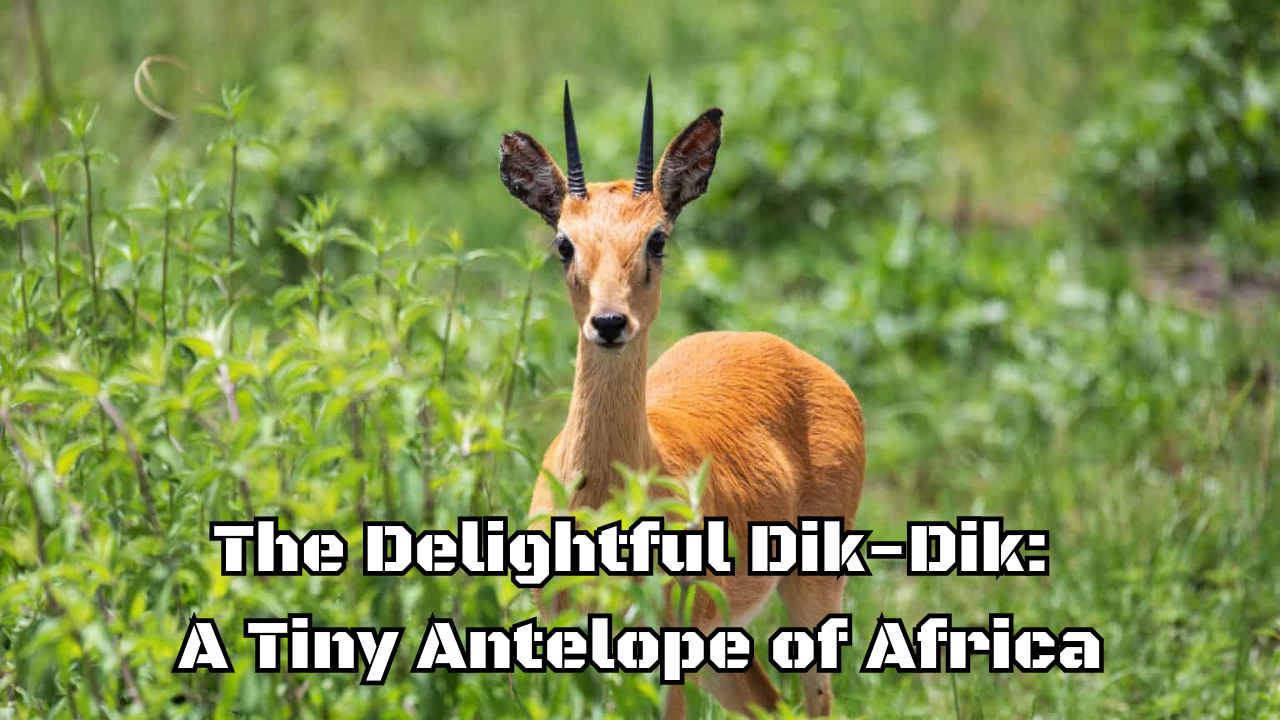Introduction:
The Dik-Dik is a small and enchanting antelope found in the savannas and shrublands of eastern and southern Africa. Known for its delicate features and distinctive behaviors, the Dik-Dik captivates wildlife enthusiasts and researchers alike. In this article, we will explore the Dik-Dik's physical characteristics, habitat, diet, behavior, and conservation status, highlighting its unique place in the animal kingdom.
Physical Characteristics:
Dik-Diks are diminutive antelopes, with adults standing only about 30-40 centimeters (12-16 inches) tall at the shoulder and weighing between 3 to 6 kilograms (6.6 to 13.2 pounds). They have a slender, graceful body covered in a soft coat of fur that varies in color from reddish-brown to gray. One of the most distinctive features of Dik-Diks is their large, almond-shaped eyes surrounded by white fur, which provides excellent vision. Males possess small, pointed horns, while females are hornless.
Habitat and Distribution:
Dik-Diks are primarily found in the arid and semi-arid regions of eastern and southern Africa, including countries such as Kenya, Tanzania, Namibia, and Angola. They inhabit a variety of environments, including savannas, bushlands, and dense thickets. Dik-Diks are well-adapted to their dry habitats, requiring little water as they obtain moisture from their diet of leaves, fruits, and flowers.
Diet and Feeding Behavior:
Dik-Diks are herbivores, feeding on a diet of leaves, shoots, fruits, and flowers. They are browsers, meaning they selectively feed on vegetation above ground level. This diet provides them with sufficient moisture, allowing them to survive in arid environments where water sources are scarce. Dik-Diks have a unique feeding strategy, where they nibble on a wide variety of plants to avoid overgrazing any single species.
Behavior and Social Structure:
Dik-Diks are known for their monogamous pairs, with males and females forming strong bonds that last for life. Each pair establishes and defends a small territory, which they mark with scent from preorbital glands located near their eyes. These territories are essential for their survival, providing a safe space for feeding, resting, and raising their young. Dik-Diks communicate through a variety of vocalizations, including whistling sounds that give them their name, derived from the sound they make when alarmed.
Conservation Status:
Dik-Diks are currently not considered endangered, but they face threats from habitat loss, hunting, and predation. Their habitats are increasingly encroached upon by agricultural expansion and human settlements. Additionally, they are preyed upon by a variety of predators, including eagles, wild cats, and hyenas. Conservation efforts focus on habitat preservation and reducing human-wildlife conflict to ensure the survival of Dik-Dik populations.
Ecological Importance:
Dik-Diks play an important role in their ecosystems as browsers, helping to control vegetation growth and contributing to the overall health of their habitats. They are also a key prey species for many predators, supporting the food web within their environments. Understanding and protecting Dik-Diks is crucial for maintaining the balance and biodiversity of the ecosystems they inhabit.
Conclusion:
The Dik-Dik is a delightful and unique antelope that embodies the charm and diversity of Africa's wildlife. By learning about their physical characteristics, behaviors, and ecological roles, we can better appreciate these tiny antelopes and support efforts to conserve their habitats. As we continue to explore and protect the natural world, the Dik-Dik stands out as a symbol of the intricate and delicate balance of nature.




